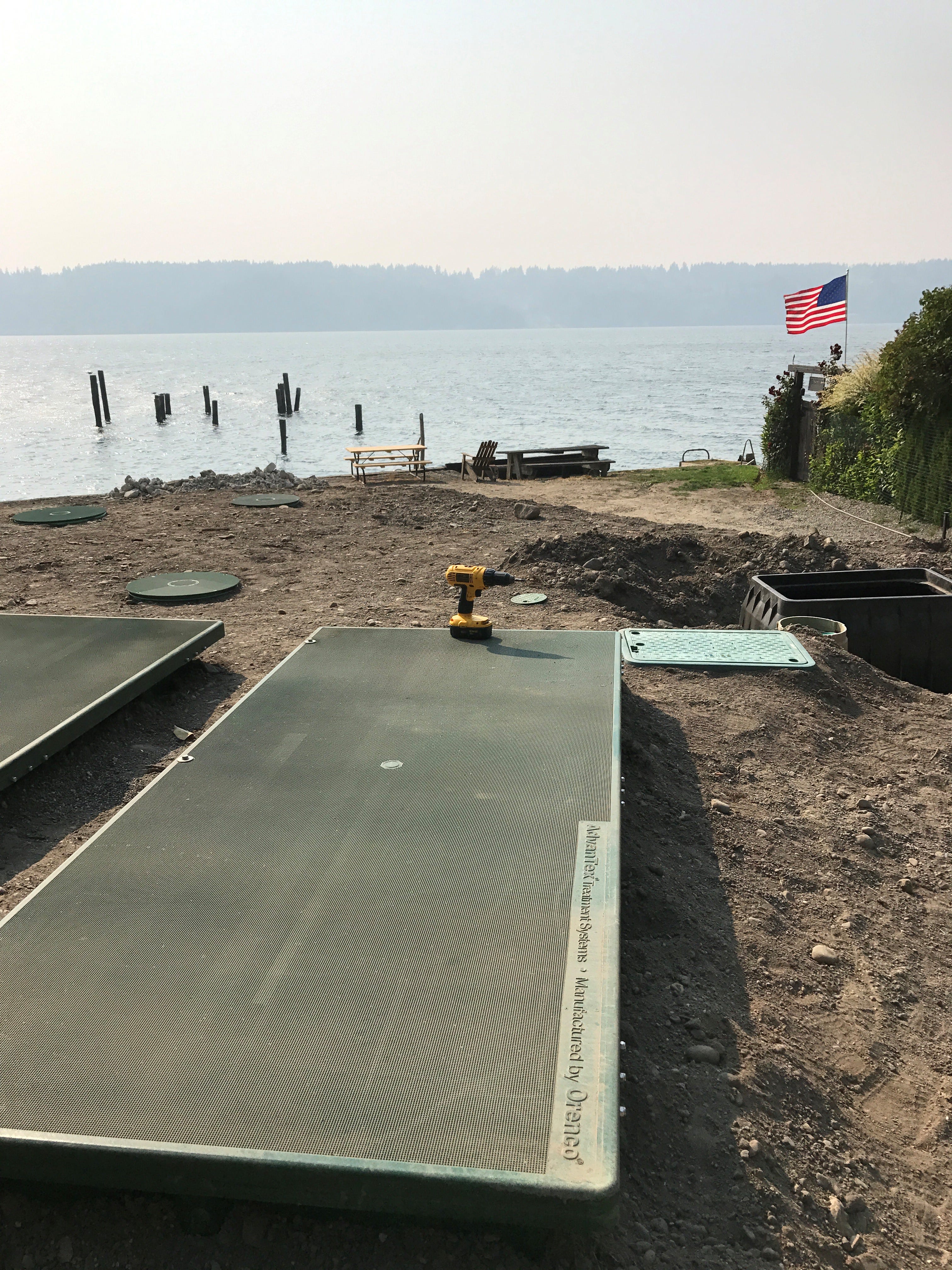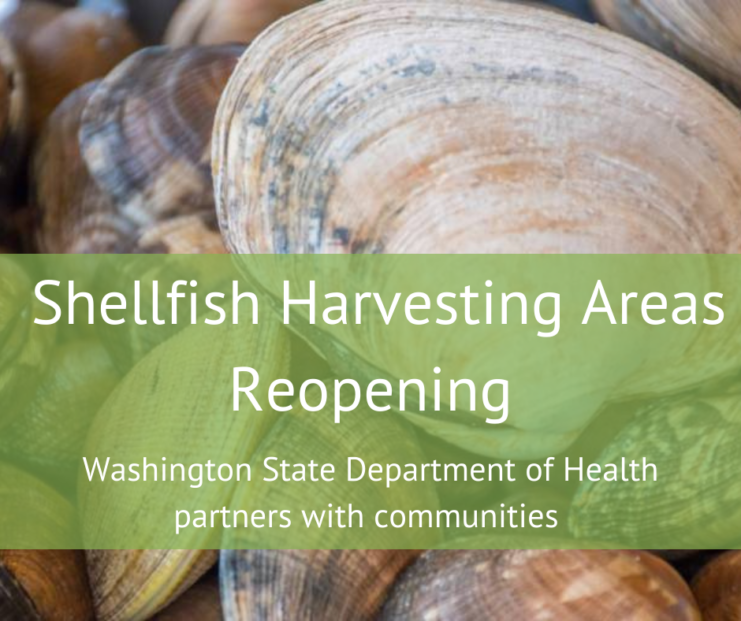This article is a re-post of an original story by Kevin Hyde with the Puget Sound Partnership. Click here to view the original post.
Shellfish are a key part of the Puget Sound ecosystem. They provide ecological value by filtering and ingesting small particles and algae from the water, and shellfish beds add structure to nearshore habitats. Shellfish also have great economic, cultural, and recreational significance to the people who live near Puget Sound. Washington is the nation’s leading producer of a variety of farmed shellfish, with an annual harvest that’s valued at more than $107 million.
The Shellfish Strategic Initiative is one of three main areas of focus for the Puget Sound Action Agenda. The Washington State Department of Health (DOH) leads the Shellfish Strategic Initiative and works to protect and restore shellfish beds in Puget Sound.
In June, DOH shared the good news that they approved over 300 acres of shellfish harvesting area to reopen in Kitsap, King, and Clallam counties. The reopened areas are in Colvos Passage, Jamestown, Port Orchard Passage, and Port Madison. For the shellfish growing areas in the first three locations, DOH provided funding for recovery work from the Environmental Protection Agency’s (EPA) National Estuary Program (NEP) to help improve water quality and remove pollution.
Audrey Coyne, shellfish strategic initiative lead at DOH, and Jean Frost, unit supervisor, shellfish growing area section at DOH, explained that the successful reopenings were the result of strong partnerships and teamwork. Coyne and Frost provided more details about how the shellfish growing areas were able to reopen.
Growing areas reopening
The growing area near Colvos Passage is located at Spring Beach on Vashon Island. This area was affected by direct sewage discharge from 12 homes. Through the NEP, DOH provided funds to Public Health Seattle King County to work with the owners of those homes to install on-site septic systems. The Puyallup Tribe also provided assistance with this project. Since 2017, there has been no direct sewage discharge in the Spring Beach area.


With Jamestown, Frost explained that the work done by Clallam County, the Jamestown S’Klallam Tribe, conservation districts, and other state and local partners helped improve the water quality in that growing area. The work included pollution identification and correction, enhanced maintenance, and fixing faulty on-site septic systems. Clallam County worked to raise awareness among homeowners about issues that affect water quality.
For the Port Orchard Passage growing area, both Kitsap Public Health worked with property owners to identify pollution sources and correct them. In many cases, this meant repairing septic systems that were affecting the waterways. Like with the Jamestown growing area, Kitsap Public Health made efforts to communicate with property owners about the importance of maintaining septic systems in good working condition.

Frost explained that Craft3, a nonprofit financial institution, offers low-interest loans to low-income borrowers for septic system repairs and replacements.
Working together for shellfish and a healthy Puget Sound ecosystem
“Reducing pathogens in our marine waters makes it safer for people to swim, recreate, and harvest shellfish,” Frost said. “We’re thinking about public health as a whole.”
Harvestable shellfish beds are tracked in the Puget Sound Vital Signs, which measure the health of Puget Sound and progress toward its recovery. Making sure there is clean water for shellfish harvesting improves the wellbeing of the people who live in the Puget Sound region. High quality local foods often provide better nutrition, and the act of harvesting shellfish can maintain cultural knowledge and build relationships. From 2007 through 2019, more acres of shellfish beds have been upgraded than downgraded, with a net increase of 6,418 acres.
“It’s exciting to see progress towards our shellfish bed recovery goal,” Coyne said. “These upgrades are the direct result of the on-the-ground work and collaboration by the many partners and communities involved.”
Frost highlighted the work done by DOH’s partners too and emphasized that the success is a team effort. “It takes a village to do this,” she said. “We can’t do this work without our partners on the ground, it was the work of other state agencies, local government, tribes, and the community.”
NEP funding makes recovery progress possible
Coyne and Frost both highlighted the fact that NEP funding enables DOH to be adaptable in the assistance it provides for shellfish recovery and water quality improvement projects.
“The National Estuary Program at the Department of Health supports shellfish bed recovery and protection work in Puget Sound through EPA Puget Sound Geographic Funds,” Coyne said. “These funds are uniquely flexible, allowing our program to support capacity-building activities such as education and outreach work and research and monitoring projects.”
Coyne emphasized that education and outreach are big factors in recovery projects. “Collaboration and communication provide the impetus for change,” she said.
“If you don’t engage the community first, then the project won’t be successful,” Frost said. “Communication is key, along with the ability to provide resources so people can change behavior and take action to address pollution sources.”
Did you Know?
The National Estuary Program at the Department of Health supports shellfish bed recovery and protection work in Puget Sound through EPA Puget Sound Geographic Funds. Since 2007, the National Estuary Program has helped support the net increase of 6,414 acres of harvestable shellfish beds in Puget Sound. These upgrades are the direct result of the on-the-ground work and collaboration by the many partners and communities involved.

